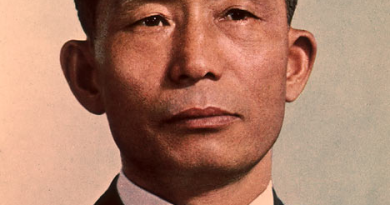Focus on Art and Global Issues: Religion
By Daniel D’Amico
Staff Writer
The right to represent religion in art is protected today by freedom of expression. The importance of protecting this right continues to be relevant today as statements about religious freedom are implemented in different forms of art. Unfortunately, in some parts of the world, this human right has been violated.
Iranian artist Monir Shahroudy Farmanfarmaian was exiled from Iran in 1979 because of her art. The Islamic Revolution led to the confiscation of many of Farmanfarmaian’s works. She was exiled for a total of twenty-six years before she returned to Iran. Her work received recognition through an exhibit in the Guggenheim called Infinite Possibilities: Mirror Works and Drawings, 1974-2014, on display last year. Farmanfarmian used the words “infinite possibility” to describe her art, showing that everything can be found in geometry. She utilized a visual and spatial experience based on the traditions of architecture and decoration of old mosques.
A more traditional example of religion in art that has endured are the Azerbaijani carpets. They have been around since about the tenth to twelfth centuries. These carpets are famous for their ornaments along with the graceful patterns. They are also found all around the world. They were mass-exported, and the patterns are reflected in various European works in the fifth century. More recently, they were seen in exhibitions in Vienna, Austria, in 1872, Turin, Itlay, in 1911, and London and Berlin in 1915.
In a holy mass in the Church of the Immaculate Conception in Baku, Azerbaijan, Pope Francis praised these carpets. According to Trend News Agency, he spoke of how just like the carpets have to be woven with “wefts of faith and warps of service.” The pope’s recognition and the process used show they are relevant to Christians in a broader sense to this day.
Carmen-Helena Téllez, a Venezuelan-American director, is directing a show Journeying La Divina Comedia: Desert, Discover, and Song in the form of a play. It is on display at the DeBartolo Performing Arts Center at the University of Notre Dame. The wide recognition it received led to a global following beyond the reach of the university. The crowd interacts as a way to reveal the “Divine Comedy” in modern day-to-day life. The audience moves from scene to scene in the “Inferno” and through art installations in “Purgatorio.” The hellish electronic landscapes add to the atmosphere.
Colombian artist/anthropologist Erika Diettes took a less direct approach to religion in art. She printed “Sudarios,” or shrouds, with photographs of those who lost loved ones throughout the fifty years of civil conflict in Colombia. She photographs them at the moment where they remember their loss.
The “Sudarios” are a traveling exhibit that have been in the Museum of Contemporary Religious Art but are intended to be shown in churches. Diettes told the Saint Louis Post-Dispatch, “That’s a decision I took from the beginning of the project because I want the spectator to feel that these images need a different state of emotion and attention” that can be found in a place of faith. The shrouds serve to show just how much war and violence truly cost.
The role of religion in art can be direct or reflected in other ways. In the works of Diettes, she designed her message for churches and other sacred places. In Farmanfarmaian’s case, her freedom of expression was taken away in Iran when she was forced into exile. The right to put religion in art is sacred and must be protected.



